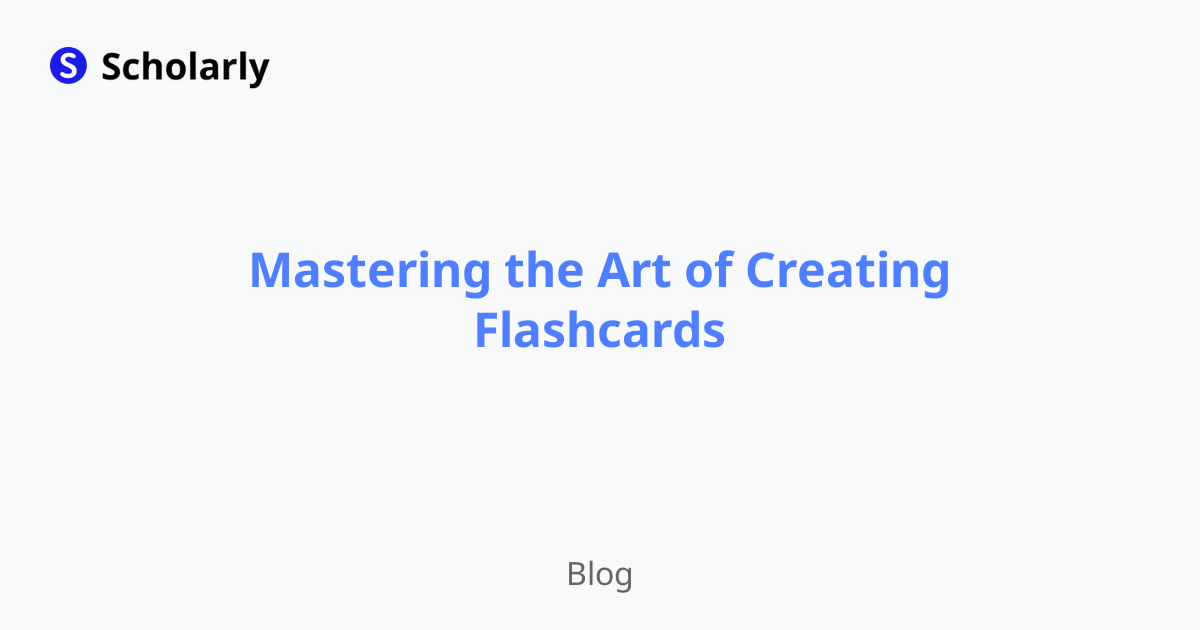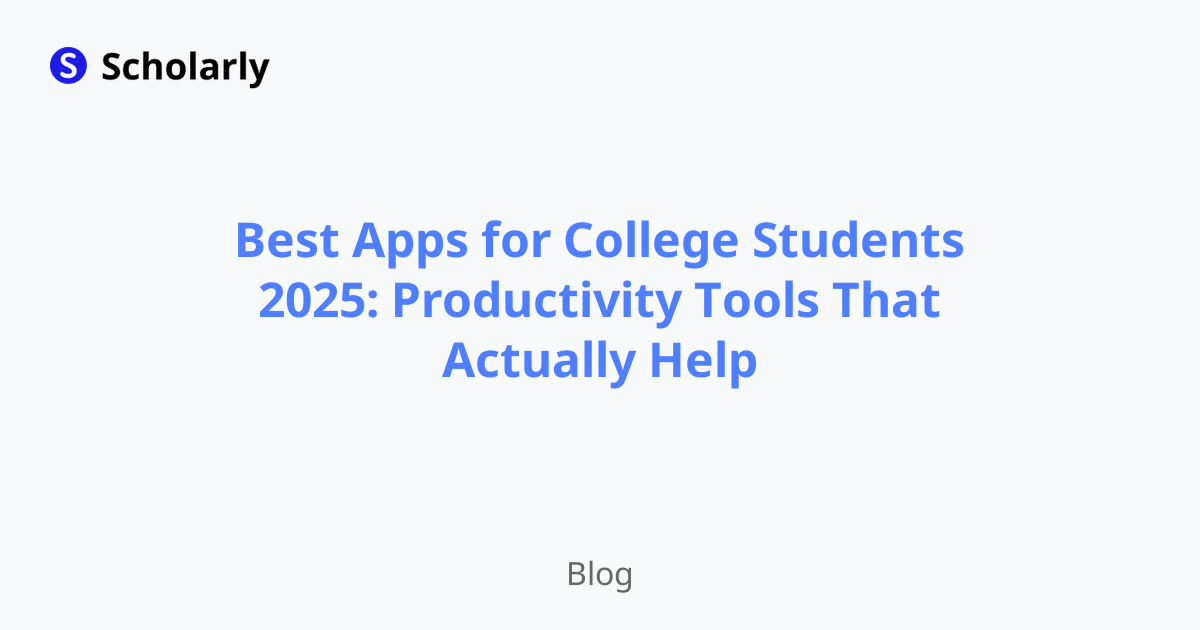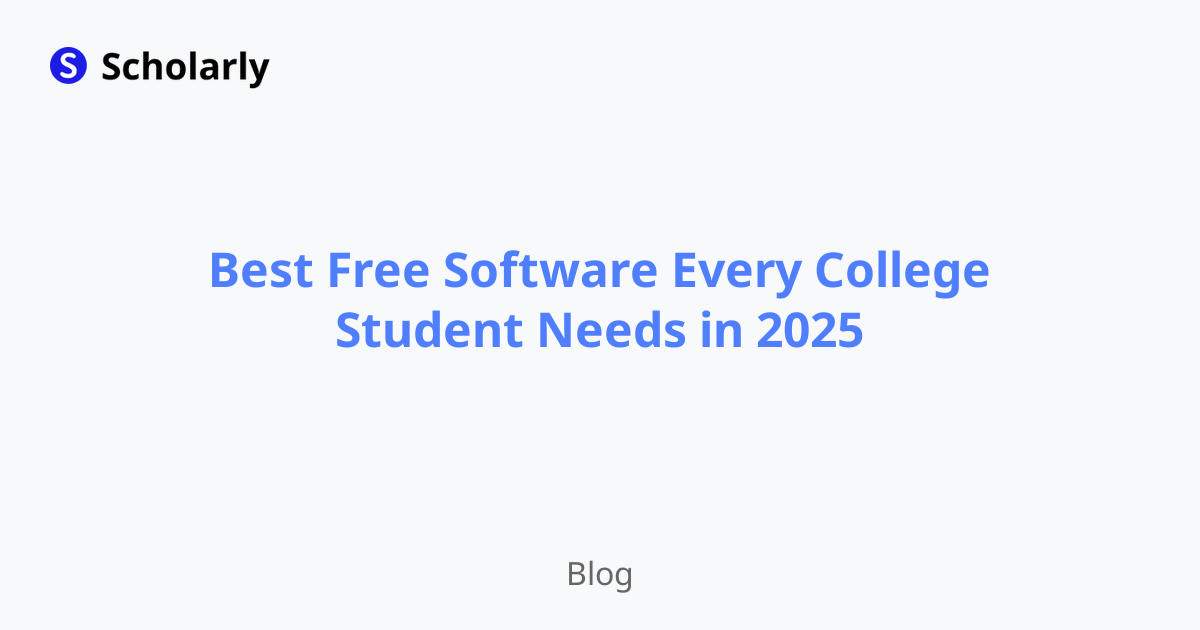Mastering the Art of Creating Flashcards
Discover the most effective techniques for creating flashcards and boost your learning

Introduction
Have you ever struggled with studying and wished there was a more effective way to retain information? Look no further than creating flashcards! In this blog post, we will dive into the art of creating flashcards and explore the most effective techniques to enhance your learning. From the history of flashcards to the benefits and best practices, we will cover it all. So, let's get started!
History
Past State
Flashcards have been used for centuries as a popular tool for learning and memorization. In ancient China, scholars used small pieces of paper to write down facts and questions for quick review. This simple yet powerful technique spread to other civilizations, such as ancient Greece and Rome, where flashcards were used to study important knowledge. In the past, flashcards were created manually using paper and pen.
Current State
In the digital age, flashcards have evolved into a versatile learning tool that can be easily created and accessed online. With the advent of technology, various digital platforms and apps have been developed to facilitate flashcard creation and usage. These platforms offer features like spaced repetition, multimedia integration, and collaborative studying, making flashcards more effective and engaging than ever before. Many students and professionals now rely on digital flashcards for efficient studying.
Future State
Looking ahead, the future of flashcards holds even more potential. With the advancements in artificial intelligence (AI), flashcards will become smarter and more personalized. AI algorithms can analyze the learner's progress, identify areas of weakness, and generate customized flashcards to target specific knowledge gaps. Furthermore, virtual reality (VR) and augmented reality (AR) technologies can bring flashcards to life, creating immersive learning experiences. The future of creating flashcards is exciting and promises enhanced learning outcomes.
Benefits
Enhanced Memory Retention: Creating flashcards helps reinforce learning through active recall, a process that strengthens memory retention.
Efficient Study Sessions: Flashcards allow you to condense essential information into bite-sized chunks, enabling more efficient study sessions.
Customizable Learning: With flashcards, you can focus on specific topics or concepts, allowing for personalized and targeted learning.
Portable and Convenient: Flashcards are compact, portable, and can be accessed anytime, anywhere, making them an ideal study tool for busy individuals.
Engaging and Interactive: Using flashcards can transform studying into a fun and interactive experience, increasing motivation and engagement.
Significance
Flashcards play a significant role in the learning process due to their effectiveness in promoting active learning and memory retention. By engaging in the creation of flashcards, learners actively process information and reinforce their understanding of concepts. Flashcards also provide a structured framework for reviewing and self-assessment, enabling learners to identify areas of weakness and track their progress. Moreover, flashcards facilitate spaced repetition, a scientifically proven technique that optimizes long-term memory.
By incorporating flashcards into your study routine, you can experience improved academic performance, increased efficiency, and a deeper understanding of the subject matter. Whether you are a student preparing for exams or a professional looking to expand your knowledge, flashcards can elevate your learning experience.
Best Practices
Use Concise Questions and Answers: When creating flashcards, keep the questions and answers brief and focused on the main ideas. Avoid lengthy explanations.
Utilize Visuals: Incorporate relevant images, diagrams, and charts into your flashcards to enhance visual learning.
Include Contextual Clues: Provide context or cues in the flashcards to prompt recall and aid in understanding.
Embrace Spaced Repetition: Implement spaced repetition techniques by revisiting flashcards at regular intervals to reinforce memory.
Mix and Vary the Content: Create flashcards that cover a diverse range of topics to maintain engagement and prevent monotony.
Pros and Cons
Pros
- Efficient and time-saving
- Promotes active recall
- Enhances long-term memory
- Customizable to individual learning needs
- Accessible anytime, anywhere
Cons
- Limited for certain types of content
- Relies on self-motivation and discipline
- May not suit all learning styles
- Can be time-consuming to create
- Requires regular review for optimal results
Comparison
When it comes to creating flashcards, various tools and platforms are available to streamline the process. Let's compare some popular options:
Anki: Anki is a free and open-source flashcard software that utilizes spaced repetition algorithms for efficient learning. It offers comprehensive customization options and supports multimedia integration.
Quizlet: Quizlet is a user-friendly online platform that allows users to create, share, and study flashcards. It includes features like audio pronunciation, interactive games, and collaborative studying.
Brainscape: Brainscape is a web and mobile-based flashcard platform that utilizes an adaptive learning algorithm to optimize study sessions. It offers a vast library of pre-made flashcards across various subjects.
Cram: Cram is a mobile app that enables users to create and study flashcards on the go. It offers features like text-to-speech, customizable study reminders, and progress tracking.
Chegg Prep: Chegg Prep is a mobile app that provides access to a vast collection of flashcards created by students and experts. It offers various study modes, including matching games and multiple-choice quizzes.
Choose the platform that aligns with your preferences and study goals.
Methods
1. Traditional Pen and Paper
One of the most straightforward methods of creating flashcards is using pen and paper. Write the question on one side and the answer on the other, and you're good to go. This method is ideal for those who prefer a tangible learning experience and enjoy the act of physically writing.
2. Digital Flashcard Platforms
As technology advances, digital flashcard platforms have become increasingly popular. These platforms provide users with the convenience of creating, accessing, and managing their flashcards online. Some popular digital flashcard platforms include Anki, Quizlet, and Brainscape.
3. Spaced Repetition Systems
Spaced repetition systems (SRS) are specialized flashcard programs that utilize algorithms to optimize learning. SRS platforms, such as Anki and SuperMemo, dynamically adjusts the timing of flashcard reviews based on the user's performance, maximizing memory retention.
4. Mobile Flashcard Apps
For those on the go, mobile flashcard apps provide a convenient way to study anytime, anywhere. Apps like Quizlet, Cram, and Chegg Prep offer a wide range of features, including offline access, study reminders, and interactive games.
5. AI-Powered Flashcard Generators
With the integration of artificial intelligence, AI-powered flashcard generators have emerged as a time-saving solution. These platforms utilize AI algorithms to automatically generate flashcards based on provided content or textbooks, saving you the effort of manual creation.
AI Impact
Artificial intelligence (AI) has the potential to revolutionize flashcard creation and usage even further. Here are some AI applications, techniques, benefits, and challenges in the context of flashcards:
AI Applications
Automatic Flashcard Generation: AI algorithms can analyze text and automatically generate flashcards based on key concepts and definitions, saving time and effort.
Personalized Recommendations: AI-powered platforms can use machine learning techniques to provide personalized recommendations for flashcards, ensuring targeted learning.
Content Enhancement: AI can analyze flashcard content and suggest additional relevant information, further enriching the learning experience.
AI Techniques
Natural Language Processing (NLP): NLP enables AI systems to understand and process human language, allowing for automated flashcard generation and content analysis.
Machine Learning: Machine learning algorithms can learn from user interactions and improve the effectiveness of flashcards by adapting to individual learning patterns.
AI Benefits
Time Saving: AI-powered flashcard generators eliminate the need for manual creation, saving time for students and educators.
Personalized Learning: AI algorithms can tailor flashcards to individual learning needs, ensuring optimized learning outcomes.
AI Challenges
Ethical Considerations: AI systems must adhere to ethical guidelines, such as data privacy and transparency, when generating flashcards or recommending content.
Accuracy and Reliability: AI-generated flashcards need to be accurate and reliable to promote effective learning. Ensuring the correctness of generated flashcards is crucial.
Common Techniques
1. Chunking
Chunking involves breaking down complex information into smaller, more manageable chunks. Create flashcards that focus on each chunk of information, allowing for easier memorization and comprehension.
2. Mnemonics
Mnemonics are memory aids or techniques that help you remember information by associating it with existing knowledge or visual imagery. Use mnemonics in your flashcards to enhance memorization.
3. Active Recall
Active recall involves actively retrieving information from memory, aiding in long-term retention. Craft flashcards that require you to actively recall information rather than passively reading.
4. Elaboration
Elaboration involves expanding on the information or making connections with other concepts. Use elaborative techniques in your flashcards, such as providing examples or relating the information to real-life scenarios.
5. Interleaving
Interleaving is the practice of mixing different topics or subjects within a study session. Create flashcards that cover various topics to promote better retention and prevent forgetting.
Challenges
1. Conceptualizing Questions
Formulating clear and concise questions that effectively test your understanding can be challenging. Spend time refining and simplifying your questions to ensure they target the core concepts.
2. Maintaining Consistency
Consistency is crucial when creating flashcards. Use the same format, font, and style across all your flashcards to maintain uniformity and avoid distractions.
3. Overloading Information
Avoid overcrowding your flashcards with excessive information, as it can hinder readability and make it harder to focus on the key concepts.
4. Balancing Detail and Simplicity
Finding the right balance between providing enough detail for comprehension and keeping the flashcards simple and concise can be challenging. Aim for simplicity without sacrificing crucial information.
5. Integrating Technology
While technology can enhance flashcard creation and usage, it also presents challenges. Familiarize yourself with the tools and platforms you use and adapt to any technical difficulties that may arise.
Potential Online Apps that Relate to Creating Flashcards
- Quizlet
Quizlet is a popular online learning platform that allows users to create, study, and share flashcards. It offers a user-friendly interface, a vast collection of pre-made flashcards, and various study modes.
- Anki
Anki is a powerful flashcard software that employs spaced repetition algorithms to optimize learning. It offers extensive customization options, compatibility with multiple devices, and a supportive user community.
- Brainscape
Brainscape is a web and mobile-based flashcard platform that utilizes an adaptive learning algorithm to enhance study sessions. It features a wide range of subjects and allows users to create and share their flashcards.
- Cram.com
Cram.com is a mobile app that enables users to create and study flashcards on the go. It offers features like customizable study reminders, text-to-speech, and progress tracking.
- Tinycards
Tinycards is a flashcard app developed by Duolingo. It provides users with the opportunity to create custom flashcards or choose from existing decks. It is particularly useful for language learning.
In conclusion, creating flashcards is a powerful and effective technique for enhancing learning and memory retention. By leveraging the benefits of flashcards, incorporating best practices, and considering the potential of AI-powered tools, you can optimize your study sessions and achieve better learning outcomes. So, start creating your flashcards today and unlock the art of effective learning!
Conclusion
In conclusion, the art of creating flashcards offers countless benefits for learners of all ages and disciplines. By understanding the history, benefits, and best practices of flashcard creation, learners can enhance their study routines and optimize memory retention. With the advent of AI-powered tools and technologies, flashcards are evolving to become more personalized, efficient, and engaging. The future of flashcards holds endless possibilities, promising a revolution in the way we learn and retain information. So, embrace the power of flashcards, employ the best techniques, and embark on your journey to mastery!
Try Our Popular AI Study Tools
Transform your study materials into interactive learning experiences with our most popular AI-powered tools:
PDF to Flashcards
Convert lecture notes and textbooks into study flashcards instantly
Text to Flashcards
Turn any text or notes into comprehensive flashcard sets
Image to Flashcards
Convert diagrams and handwritten notes into digital flashcards
YouTube to Flashcards
Generate flashcards from educational video content



